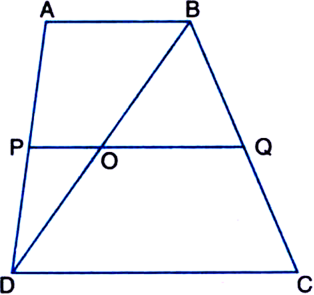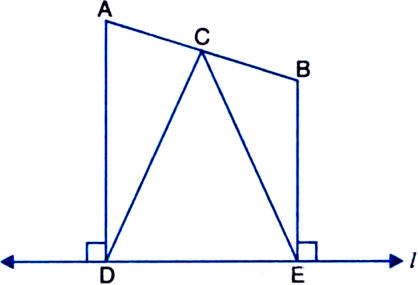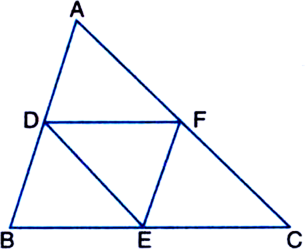 Long Answer Type
Long Answer Type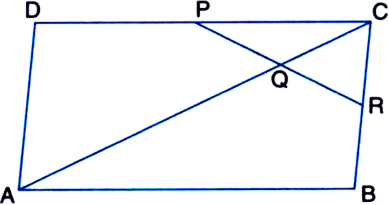
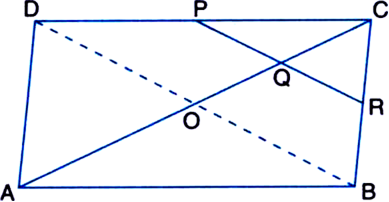
AC. PQ produced meets BC at R.
To Prove: R is the mid-point of BC.
Construction: Join BD to intersect AC at O.
Proof: ∵ ABCD is a parallelogram and the diagonals of a parallelogram bisect each that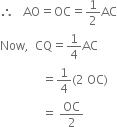
![]() Q is the mid-point of CO
Q is the mid-point of CO
In ∆CDO,
∵ P is the mid-point of DC and Q is the midpoint of CO
∴ PQ || DO | by mid-point theorem
⇒ PR || DB
⇒ QR || OB
Now, in ∆COB,
∵ Q is the mid-point of CO and QR || OB
∴ R is the mid-point of BC
| by converse of mid-point theorem
 Short Answer Type
Short Answer Type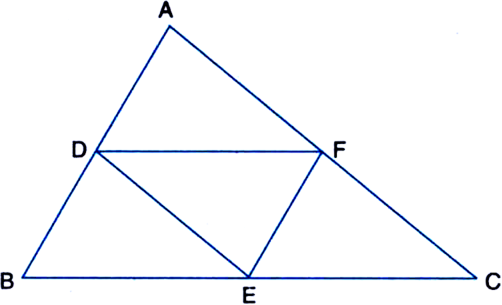
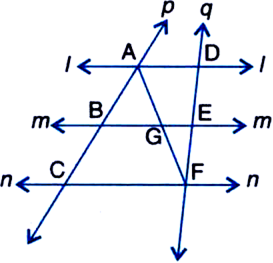
Points A and B are on the same side of a line l. AD and BE are perpendiculars to I, meeting at D and E respectively. C is the mid-point of AB. Prove that CD = CE
[Hint: From C draw the perpendicular CM on l.]
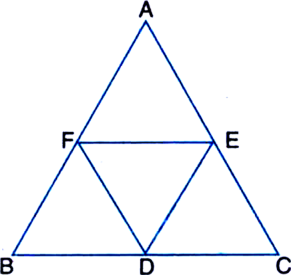
P is the mid-point of side AB of a parallelogram ABCD. A line through B parallel to PD meets DC at Q and AD produced at R (see figure). Prove that
(i) AR = 2 BC
(ii) BR = 2 BQ.
